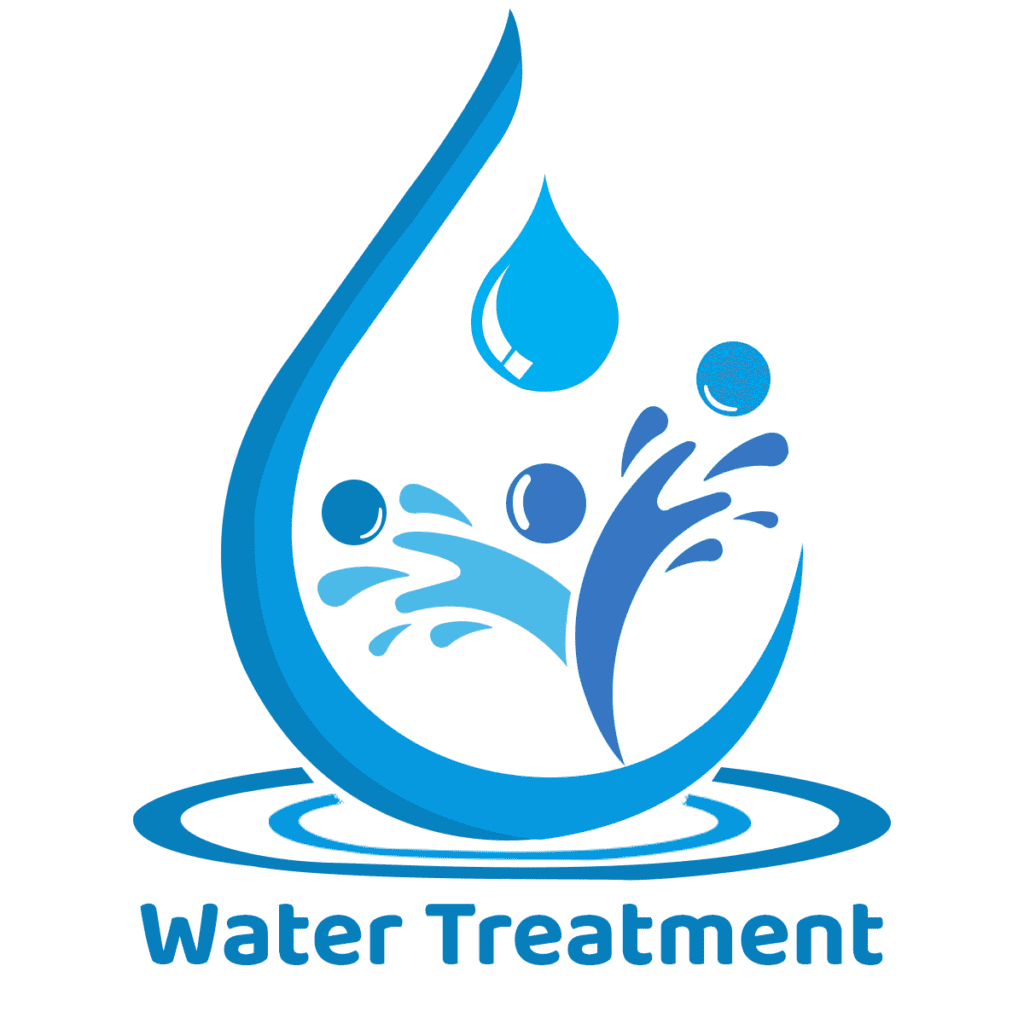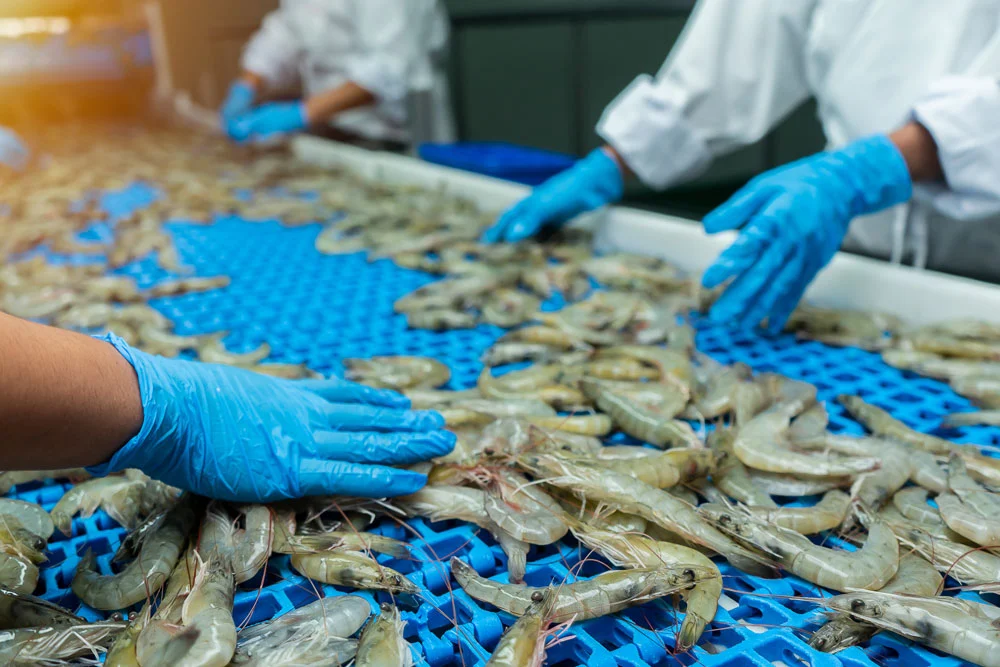
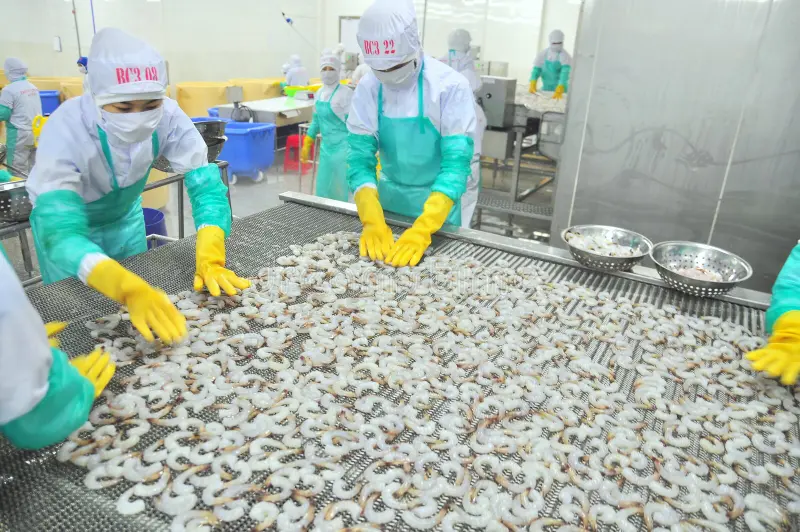
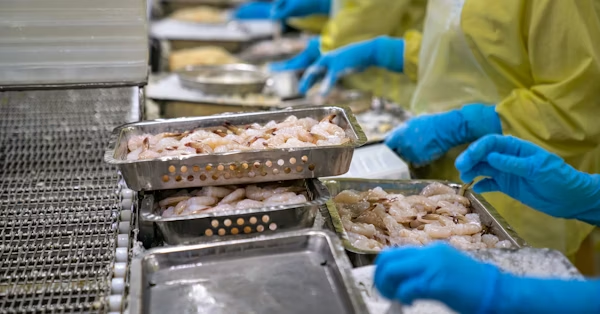
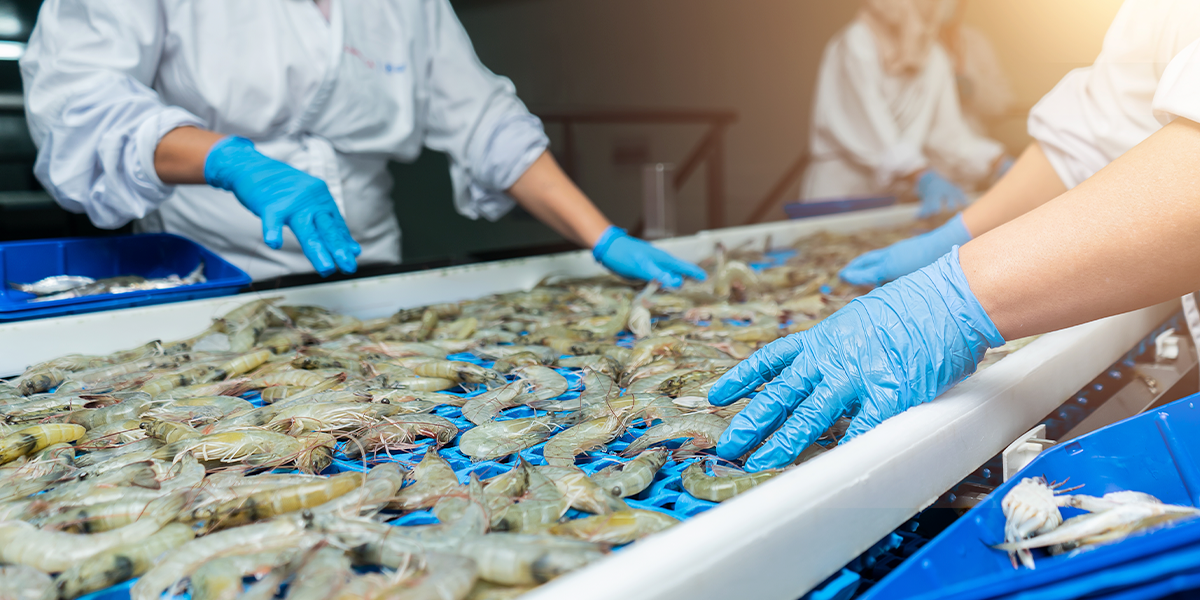
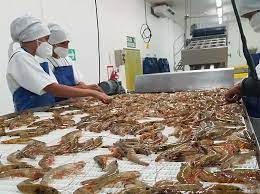
Seafood Processing Water Plant
General Details
- Purpose: Provide high-quality water for seafood processing, equipment cleaning, and ice production.
- Water Source: Municipal water, borewell water, or seawater (with desalination).
- Compliance: Meets standards like HACCP, FDA, and ISO 22000 for food safety.
2. Capacity
- Processing Capacity:
- Small-scale: 5,000–10,000 liters per hour (LPH).
- Medium-scale: 10,000–50,000 LPH.
- Large-scale: 50,000–500,000 LPH (industrial plants).
3. Filtration Stages and Technology
Stage 1: Pre-Treatment
- Screening Filters: Removes large particles, sand, and debris.
- Sedimentation Tank: Settles heavier suspended solids.
- Chemical Dosing:
- Coagulants to remove turbidity.
- Antiscalants for RO systems.
Stage 2: Filtration
- Sand Filters: Removes sediment, silt, and larger suspended solids.
- Activated Carbon Filters: Eliminates chlorine, organic impurities, and odors.
- Micron Filters: Removes fine particles (1–5 microns).
Stage 3: Desalination (if applicable)
- Reverse Osmosis (RO) System: Removes dissolved salts, heavy metals, and reduces TDS (Total Dissolved Solids).
- High-pressure pumps for seawater desalination.
- Energy Recovery System (optional): Improves efficiency in seawater RO systems.
Stage 4: Disinfection
- UV Sterilization: Kills bacteria, viruses, and pathogens.
- Ozonation (optional): Ensures odor-free water and additional disinfection.
- Chlorination: Provides residual disinfection in storage tanks.
Stage 5: Post-Treatment (Optional)
- pH Adjustment: Ensures water is neutral and safe for seafood.
- Mineralization Unit: Adds necessary minerals for specific processes.
Ice-Making Water Treatment (Optional)
- Ultra-purified water system to produce food-grade ice for preserving seafood.
4. Technical Specifications
- Power Supply:
- Voltage: 220–415V AC, 50 Hz (customizable based on location).
- Power Consumption:
- ~2–10 kW for small-scale plants.
- ~20–100 kW for larger industrial setups.
- Operating Pressure:
- Filtration: 2–5 kg/cm².
- RO: 10–80 kg/cm² (higher for seawater desalination).
5. Material of Construction
- Filter Tanks: FRP (Fiber Reinforced Plastic), Stainless Steel (SS304/316), or HDPE.
- Piping: Food-grade PVC/UPVC/HDPE or Stainless Steel.
- Valves and Fittings: Corrosion-resistant materials suitable for food-grade applications.
6. Control System
- Automation: PLC-based system for monitoring and controlling plant operations.
- Sensors: Real-time monitoring of pH, TDS, pressure, and chlorine levels.
- Alerts: Filter replacement, membrane cleaning, and water quality alarms.
7. Dimensions and Weight
- Plant Size: Dependent on capacity:
- 5m × 10m for a 50,000 LPH system (varies based on layout).
- Weight: 500–5000 kg, depending on capacity and materials used.
